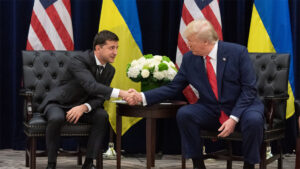The U.S. Federal Reserve is in the midst of raising interest rates. By raising the cost of borrowing and making debt (money) more expensive, you control spending thereby controlling inflation.
The United States is currently experiencing the worst inflation crisis in some 40 years. The Federal Reserve’s interest rate hikes are the traditional tool in combatting such a problem.
The challenge of inflation is not America’s alone. Across Europe and Asia, global currencies are seeing inflation drive up the cost of food, fuel, consumer goods, and housing. Unlike the United States, however, most countries’ central banks do not have as direct a course to combat inflation as the Federal Reserve.
A combination of demographic and Russian sanction-related inflationary pressures limit most European nations’ abilities to aggressively raise rates. A population as old and quickly aging as Germany or Italy’s is unlikely to see a bounce back in consumer spending once rates return to zero–where they have been for over a decade. This is a move the Europeans copied out of Japan’s playbook, whose nearly 20 years of near-or-at-zero interest rates are likely to be their foreseeable future.
So what does this mean for bond markets? The U.S. has the demographic strength and economic resilience to keep raising its interest rates, while the rest of the world will be forced to continue issuing bonds at or near zero. Which means their bonds, and ability to borrow, will soon become strongly uncompetitive vis-a-vis the United States.
What does this mean for inflation and the US economy writ large? We invite those of you interested to join us on a webinar that will cover these topics and more in depth on June 8th. More information at the sign up link below. Unable to attend the webinar live? No problem. All paid registrants and attendees will be able to access a recording of the presentation as well as a PDF of presentation materials.
Here at Zeihan On Geopolitics we select a single charity to sponsor. We have two criteria:
First, we look across the world and use our skill sets to identify where the needs are most acute. Second, we look for an institution with preexisting networks for both materials gathering and aid distribution. That way we know every cent of our donation is not simply going directly to where help is needed most, but our donations serve as a force multiplier for a system already in existence. Then we give what we can.
Today, our chosen charity is a group called Medshare, which provides emergency medical services to communities in need, with a very heavy emphasis on locations facing acute crises. Medshare operates right in the thick of it. Until future notice, every cent we earn from every book we sell in every format through every retailer is going to Medshare’s Ukraine fund.
And then there’s you.
Our newsletters and videologues are not only free, they will always be free. We also will never share your contact information with anyone. All we ask is that if you find one of our releases in any way useful, that you make a donation to Medshare. Over one third of Ukraine’s pre-war population has either been forced from their homes, kidnapped and shipped to Russia, or is trying to survive in occupied lands. This is our way to help who we can. Please, join us.








